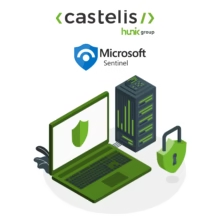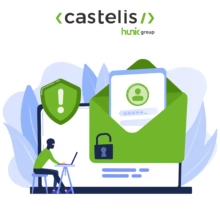
Zero Trust: How does this strategy strengthen corporate security?
The Zero Trust security strategy is emerging as a robust and adaptive response in a digital world where cyber threats are constantly evolving. This article explores in depth how Zero Trust strengthens enterprise security, highlighting its direct benefits and tangible returns on investment. For security professionals wishing to implement this strategy, we detail the key stages of deployment and the pitfalls to avoid.
As the Zero Trust model gains in popularity, it’s essential to understand the challenges ahead, and the importance of keeping abreast of developments. Dive in with us in this comprehensive exploration of Zero Trust and discover why it’s time for your company to adopt this revolutionary approach.
The direct benefits of adopting Zero Trust
Adopting the Zero Trust model offers a number of advantages for strengthening corporate security:
- Reduced attack surface: By eliminating the notion of implicit trust, the model limits potential entry points for threats.
- Reinforced authentication: All users, whether internal or external, must prove their legitimacy before accessing resources, ensuring that only authorized actors have access to sensitive data.
- Network segmentation: This strategy prevents the lateral circulation of threats across the network. If a segment is compromised, the intrusion is contained and cannot easily spread to other parts of the network.
- Rapid detection of threats: Thanks to continuous monitoring, any suspicious activity or deviation from the norm is quickly identified, enabling immediate intervention.
- Proactive response to suspicious behavior: By constantly monitoring user and device behavior, the Zero Trust model enables action to be taken before a potential threat becomes a real intrusion.
Taken together, these advantages offer a robust and adaptive approach to security, essential in today’s cyber landscape.
Return on investment in security
Investing in Zero Trust brings tangible benefits for businesses, despite the initial costs. Here are the main returns on investment:
- Reduced post-breach costs: The costs associated with a data breach, whether financial, regulatory or reputational, are devastating for a company. They can be significantly reduced, or even avoided, with a Zero Trust strategy.
- Fewer security incidents: By adopting Zero Trust, companies can prevent many incidents, minimizing remediation expenses.
- Savings on regulatory fines: An improved security posture can help avoid financial penalties linked to non-compliance with data protection regulations.
- Preserving customer trust: By avoiding data breaches, companies maintain the trust of their customers, which is essential for loyalty and growth.
- Optimization of operations: With greater visibility and control over access to resources, companies can identify and eliminate inefficiencies, improving overall operations.
- Improved compliance: The Zero Trust model facilitates compliance with various cybersecurity and data protection regulations.
- Direct financial benefits: By reducing the number of security incidents, companies can make significant savings by avoiding the hidden costs associated with breaches, such as downtime, lost productivity, legal fees and public relations costs. What’s more, justifying enhanced security can lead to reductions in cyber insurance premiums.
In short, while the initial cost of implementing Zero Trust may seem high, the medium- and long-term benefits in terms of security, efficiency and customer confidence make it a wise investment for any modern business.
Implementing Zero Trust: Practical tips for security professionals
Key steps to an effective Zero Trust strategy
Implementing a Zero Trust strategy requires a methodical and thoughtful approach. Here are the key steps to follow for a successful deployment:
- Initial assessment: Identify and assess the company’s assets, data and resources to determine specific security needs.
- Define roles and responsibilities: Establish clear policies on who can access what, based on the principle of least privilege.
- Network segmentation: Divide the network into micro-perimeters to limit the lateral circulation of threats and protect sensitive resources.
- Implement multi-factor authentication: Ensure that users can robustly prove their identity before accessing resources.
- Ensure continuous monitoring: Use monitoring and analysis tools to detect and respond rapidly to suspicious or abnormal activity.
- Train and sensitize employees: Educate employees on Zero Trust principles and train them to adopt good security practices.
Pitfalls to avoid in the transition to Zero Trust
As with any major transition, implementing Zero Trust is not without its challenges. Here are some common pitfalls to avoid:
- Failing to plan for the long term: Zero Trust is not a one-off solution, but a long-term strategy. Avoid looking for quick fixes and focus on creating a sustainable infrastructure.
- Neglecting user training: Even the best technology will fail if users don’t understand or respect new procedures.
- Underestimating internal threats: Zero Trust isn’t just about external threats. Make sure you monitor and control access for employees and internal partners.
- Not regularly reviewing policies: The threat landscape is constantly evolving. Regularly review and adjust your policies and procedures to ensure they remain relevant and effective.
- Over-reliance on technology: While technological tools and solutions are essential, they must be complemented by sound policies, adequate training and clear governance.
By keeping these tips and warnings in mind, security professionals can ensure that their transition to Zero Trust is both smooth and effective.
Essential integration of Zero Trust into cloud governance and strategy
Chances are, your organization already has a cloud governance strategy in place. The Zero Trust approach integrates with this strategy to reinforce security, ensure compliance and optimize management of cloud resources, by aligning the strictest security principles with cloud governance practices.
- Alignment with cloud governance: Cloud governance involves managing and regulating the use of cloud resources within the enterprise. Zero Trust, with its principle of “never trust, always verify”, complements governance by ensuring that access to cloud resources is strictly controlled and monitored, which is a key element of governance.
- Enhanced security: Cloud environments are dynamic and potentially exposed to a variety of threats. Adopting a Zero Trust strategy helps minimize these risks by applying strict access controls and systematically verifying identities and devices before granting access to cloud data and services.
- Compliance and regulation: data protection regulations, such as GDPR or CCPA, require companies to manage and protect personal data responsibly. Zero Trust can help meet these requirements by ensuring that only authorized users have access to sensitive data, reducing the risk of data breaches.
- Reducing the attack surface: By integrating Zero Trust into cloud governance, companies can reduce their attack surface by segmenting access to resources and preventing lateral movement in the network, which is crucial for security in the cloud.
- Identity and access management: Identity and access management (IAM) is a central component of cloud governance. Zero Trust relies on robust IAM to continuously verify and authenticate users, strengthening governance and security.
Towards widespread adoption of the Zero Trust approach
Challenges ahead for Zero Trust
As the Zero Trust model gains in popularity and adoption, several challenges loom on the horizon:
- Increasing infrastructure complexity: With the emergence of new technologies and the diversification of IT environments, implementing Zero Trust is becoming more complex.
- Resistance to change: Companies with established infrastructures and policies may encounter internal resistance to adopting a new security approach.
- Identity management: As the number of users, devices and applications increases, identity and access management becomes a major challenge.
- Integration with existing systems: Ensuring Zero Trust’s compatibility and integration with existing security systems and solutions can be complex.
The importance of staying informed and up-to-date on model developments
The cybersecurity landscape is constantly evolving, and the Zero Trust model is no exception. For security professionals, regular monitoring of topics is essential to avoid aging systems:
- Continuous monitoring: Keeping abreast of the latest Zero Trust research, trends and developments is essential to adapt and refine strategies accordingly.
- Regular training: Security teams need regular training to understand the nuances and updates of the Zero Trust model.
- Community involvement: Joining specialized forums, groups and conferences can help to share knowledge, learn from peers and stay at the cutting edge of technology.
- Periodic re-evaluation: Zero Trust policies and procedures need to be reviewed and adjusted regularly to ensure they meet current and future challenges.
By remaining proactive and engaging in continuous learning, companies can ensure that their Zero Trust approach remains robust, relevant and effective in the face of emerging threats.
The importance of being supported by cybersecurity experts
In the process of adopting the Zero Trust model, it is crucial for companies to surround themselves with cybersecurity experts. Implementing this strategy requires technical expertise, an in-depth understanding of current threats and the ability to anticipate future challenges.
Why choose Castelis as your trusted partner for implementing a Zero Trust strategy?
As a preferred partner ofAzure and Cloudflare, Castelis offers undeniable added value to companies wishing to adopt Zero Trust.
Azure expertise: Azure is renowned for its integrated approach to security, with tools such as Azure Active Directory and Azure Security Center at the heart of the Zero Trust strategy. By partnering with Castelis, companies benefit from in-depth expertise in making the most of these tools.
Partnership with Cloudflare: Cloudflare is a major player in security, offering protection at the network edge. Through its partnership with Cloudflare, Castelis helps companies maximize their security by minimizing the attack surface.
Azure and Cloudflare offer major competitive advantages when it comes to Zero Trust. With native integration into the Microsoft ecosystem, Azure offers a seamless experience for users, while guaranteeing first-class security. At the same time, Cloudflare acts as an intermediary, verifying users before they reach a company’s infrastructure, making it the preferred choice for enhanced security.
To help you implement your Zero Trust policy, call on experts like Castelis.
Voir plus de Actualités

Why Microsoft Sentinel is Essential for Cyber Threat Management: A Practical Guide for CIOs

Top best practices to improve email security with DMARC

Cloudflare Zaraz Guide: Manage your third-party scripts at the Edge for better web performance
